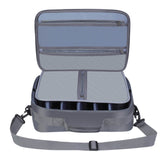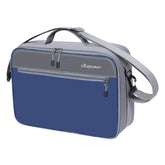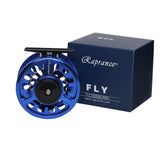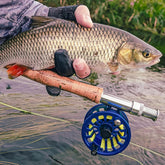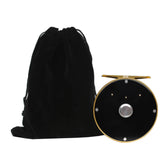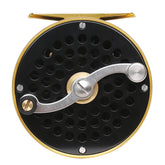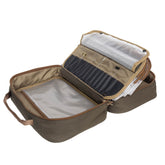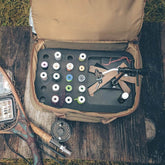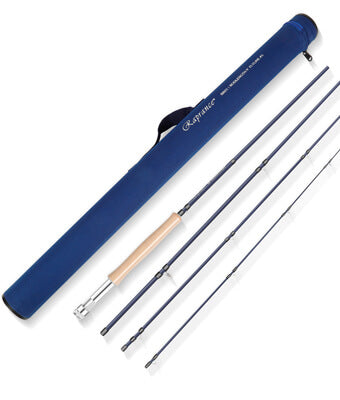Fly Line: Choosing the Best Floating Fly Fishing Line for Success
When it comes to fly fishing, the type of fly line I choose significantly impacts my success on the water. The best floating fly line allows me to present my fly at the ideal depth and ensures a natural drift, which is crucial for enticing fish. Understanding the difference between floating and sinking fly lines is essential for achieving the best results in various fishing scenarios.

Choosing the right floating fly line enhances my ability to target specific species and adapt to different water conditions. With a floating line, I can easily mend my line and make delicate presentations, factors that are vital when targeting wary fish. Familiarizing myself with the features and benefits of floating lines versus sinking lines has improved my overall fishing experience.
In this blog post, I’ll explore the best floating fly lines available, their advantages, and when to use them compared to sinking lines. By sharing my insights and experiences, I hope to help fellow anglers make informed decisions and elevate their fly fishing game.
Understanding Fly Lines
In fly fishing, selecting the right line is crucial for success. Different fly line types, tapers, and weight standards affect casting efficiency and presentation.
Fly Line Types
Fly lines come in various types to suit specific fishing environments. The primary categories include floating, sinking, and intermediate lines.
- Floating Line: Ideal for dry flies and surface presentations. It stays on top of the water, allowing for easy visibility and control.
- Sinking Line: Best for deep-water fishing. These lines pull down quickly, ensuring your flies reach the desired depths. Full sinking lines are often used for targeting fish in deeper waters.
- Intermediate Line: Offers a slow sink rate, perfect for fishing just below the surface. This type can be effective for mid-column feeders.
Each type serves a unique purpose, making it essential for me to choose based on my target species and water conditions.
Fly Line Tapers
Taper refers to how the line's thickness changes from the front to the back. Understanding this is key to effective casting. The most common tapers are weight forward (WF) and double taper (DT).
- Weight Forward Taper: This design concentrates weight at the front, facilitating longer casts and better turnover. It's versatile for various fly sizes.
- Double Taper: This style has an even taper, allowing for delicate presentations. It is often favored for small streams and when using lighter flies.
Other specialized tapers exist, such as delta taper, optimized for specific casting techniques. My choice of taper directly affects control, accuracy, and the type of flies I can effectively use.
Fly Line Weight and AFTM Standards
The weight of fly lines corresponds to the AFTM (American Fishing Tackle Manufacturers) standards. This system classifies lines by their weight per a specified length, impacting the rod and reel compatibility.
- AFTM Ratings: Lines are rated from 1 (light) to 14 (heavy). A higher number allows for larger flies and stronger fish.
- Weight Forward vs. Double Taper: Knowing the difference is crucial. For example, a WF6 line is more aggressive than a DT6 line, making it easier to cast heavier setups.
Choosing the correct fly line weight affects casting distance, accuracy, and the overall fishing experience. It’s critical to match this with my equipment to optimize performance.
Specifics of Floating Lines
Floating fly lines play a crucial role in effective fly fishing. They are designed to stay on the water's surface, allowing for varied techniques and presentations. Here’s a closer look at their advantages and tips for selecting the best line.
Advantages of Floating Fly Lines
Floating fly lines are ideal for presenting dry flies and nymphs on the water’s surface. They allow for delicate presentations, where subtlety can be the difference between success and failure. A floating line keeps your fly visible, making it easier to track and control.
These lines are versatile and suitable for sight fishing, where you can observe fish targets. This visibility is essential when using patterns like streamers, as it helps in detecting takes. Brands like Rio, Airflo, and Scientific Anglers offer floating lines that enhance casting accuracy and line management.
Choosing the Best Floating Fly Line
When selecting a floating fly line, consider the weight, taper, and intended use. Match the line weight to your rod for optimal performance. A weight-forward taper can improve casting distance and accuracy when using larger flies or streamers.
Look for features such as high-visibility colors, which assist in line tracking. Also, consider the line's coating and memory. A low memory line will lay flat and reduce tangling. Testing a few options can help identify the best fit for your fishing style and conditions.
Comparing Floating and Sinking Lines
Understanding the differences between floating and sinking lines is crucial for effective fly fishing. Each line type suits specific scenarios, influencing the presentation of the fly and the likelihood of catching fish.
When to Use Sinking Lines
I often reach for sinking lines when the target species is found in deeper waters. These lines help me achieve the desired depth quickly, essential for catching fish like trout in lakes or rivers during warmer months.
Using full sinking lines allows for a more significant drop, making them ideal in deep water situations or when targeting fish dwelling at the bottom. I appreciate the versatility of intermediate fly lines too; they cover a range of conditions, slowly sinking to provide a natural presentation for wet flies or chironomids.
In areas with varied depths, I opt for sink tips that combine floating and sinking features. This setup works well near weed beds where fish can conceal themselves yet still allows my flies to dive into depths where fish feel safer.
Floating vs. Sinking: Fishing Situations
Floating lines excel in shallow water or when fishing on the surface. They help me present streamers and other flies effectively. In this scenario, I can employ techniques like using a bobber to suspend my offering at a specific depth.
When fishing in lakes, particularly for trophy lake species, floating lines let me target the upper layers, where fish often feed on emerging insects. For situations where fish are rising to the surface, a floating line is indispensable.
By understanding sink rates and my fishing environment, I can choose the right line to match the conditions. Each type has its place, and knowing when to switch between them can enhance my fishing success.
Fly Line Components and Setup

Understanding the key components of a fly line setup is essential for effective casting and mending. The components include backing, the main line, and the running line, along with connections to leaders and tippets. Each part plays a vital role in the overall performance of my fishing tackle.
The Fly Line System: Backing, Main Line, and Running Line
In my fly line system, backing serves as the foundation, attached to the reel. It’s typically made of braided material, providing extra length and strength. This is crucial for fighting larger fish that might take more line than the main section allows.
The main line is often weight forward to aid in casting efficiency. Its design allows for quick loading of the rod, enhancing casting distance and precision. The running line follows the main line and can be thinner, crucial for managing drag and line control during retrieves and presentations.
Connecting Leaders and Tippets
I connect leaders directly to the end of the fly line using either loop-to-loop connections or nail knots. The leader is generally longer than the fly line, allowing for delicate presentations and minimizing visibility to fish.
The tippet is a thinner section of line tied to the end of the leader, critical for transferring energy while casting. It should match the fly size and type, often chosen based on the fishing conditions. By balancing the tippet with the fly, I ensure optimal performance in various scenarios.
Balancing Fly Line with Fly Rod and Reel
Balancing the fly line with the fly rod and reel is vital for smooth casting. I consider the weight of the line, rod action, and the reel's drag system. A weight-forward line paired with the appropriate rod allows for easier loading during casting.
Matching the reel to the line weight helps maintain a cohesive setup. I ensure the reel can handle the line’s thickness and the backing’s capacity. This balance enhances casting accuracy and improves the overall fishing experience.

